By Henrik O. Lunde
The Polish Campaign in 1939 demonstrated the awesome effectiveness of aircraft as weapons platforms for close ground support. Along with flexible control of tactical operations, it became part of the concept popularly referred to as blitzkrieg. The effectiveness of this doctrine was again demonstrated by the German military during the Norwegian campaign in 1940.
This campaign also demonstrated the usefulness of aircraft as vehicles for transporting supplies and reinforcements. The Luftwaffe made a significant contribution to the reinforcement and supply effort by successfully carrying out the largest air transport operation in history up to that time. Largely due to the efforts of the Luftwaffe, for more than two months the Germans were able to hold on to an increasingly precarious beachhead in and around Narvik over the great distances that separated those forces from the other beachheads.
The Germans were also pioneers in the use of airborne troops and initially planned to use paratroopers in the Polish campaign; however, German success was so quick and crushing that they were not used in air assault roles. The invasion of Denmark and Norway in 1940, codenamed Weserübung, Exercise Weser, saw the first use of the vertical envelopment concept to seize airfields and key objectives far behind enemy lines. The assault on Sola Airfield and the airborne operation against Dombås were the first contested airborne operations in history. These early operations revealed problems familiar to present-day planners and executors of such operations.
The German Drop into Scandinavia
The German parachute forces in 1940 were organized into the 7th Air Division under Luftwaffe command. The division—organized along the lines of an infantry division—was commanded by Maj. Gen. Kurt Student, but it did not reach full strength until 1941. In April 1940, it consisted of two regiments, each having only one battalion.
The 1st Regiment was commanded by Colonel Bruno Bräuer. The 1st Battalion, commanded by Captain Erich Walther, constituted the airborne assault force for the invasion of Denmark and Norway. One of four companies was employed to seize airfields and bridges in Denmark, while the other three companies were used in the invasion of Norway.
Company 4, commanded by Captain Walther Gericke, had two primary missions in Denmark. One platoon of 36 troops, commanded by 1st Lieutenant Eckleben, parachuted directly onto the two airfields at Aalborg (Aalborg East and West) at 7:15 am on April 9 from three Junkers Ju-52s and secured them without resistance for the landing of an infantry battalion. The paratroopers also seized the bridge over Limfjord north of Aalborg without opposition.
The mission of the rest of Company 4 was to capture the 3,200-meter Storstrøm Bridge connecting Falster Island with Seeland Island and hold it until the arrival of Group Buck, led by Colonel Buck, commander of the 305th Infantry Regiment. The bridge consisted of two spans. The longest span by far was the one from Falster to a small island called Masnedö. A much shorter span connected Masnedö to Seeland. There was an old fort on Masnedö that the Germans believed was active and needed to be captured in order to secure the bridge.
Company 4 was scheduled to make its parachute assault on Masnedö at 6:15 am from nine Ju-52s, capture the fort, and secure both bridge spans. The assault was delayed 20 minutes due to weather conditions, but the paratroopers quickly captured the fort, which was not manned. Simultaneous with the arrival of the paratroopers, engineers from Group Buck were landed on Falster from ships and secured the bridge between Falster and Masnedö. The paratroopers, meeting no resistance, proceeded to secure the second span between Masnedö and Seeland.
Unexpected Difficulties
The German assault units for the attack on Norway consisted of six task forces. Task Force 5, to be landed by ship, had the mission of capturing Oslo and the Norwegian government early on the morning of April 9. The Germans believed that this would lead to a Norwegian surrender and a peaceful occupation of the country. This plan was frustrated when Task Force 5 met unexpected resistance as it approached the capital’s last line of defense, the Oscarborg fortress complex. The task force’s flagship, the brand new heavy cruiser Blücher, was sunk by gunfire and torpedoes and about 1,000 sailors and soldiers were killed.
The Germans also planned to capture Fornebu Airport southwest of Oslo by parachuting two airborne companies directly on the airfield. The 1st and 2nd Companies of the 1st Parachute Regiment, commanded respectively by 1st Lieutenant Herbert Schmidt and Captain Kurt Gröschke, were carried in 29 Ju-52s. The plan called for these troops to seize the airfield quickly, allowing German transport aircraft to land two infantry battalions and an engineer company from the 324th Infantry Regiment.
The German airdrop at Fornebu was cancelled when the aircraft carrying the paratroopers encountered heavy fog over the drop zone. Most aircraft turned around and landed at Aalborg, captured by the Germans that morning. One aircraft crashed into the ocean, and 12 paratroopers from Company 1 were lost along with the plane’s crew. Three planes carrying paratroopers did not return to Aalborg but joined the transport aircraft that later landed at Fornebu. The paratroopers at Aalborg were brought to Norway on April 13.
The landing of transport aircraft at Fornebu was predicated on German paratroopers having secured the airfield. Through a communications failure or a misunderstanding of orders, some of the transport aircraft continued on to Fornebu after the airdrop was cancelled, and they landed along with a squadron of German Messerschmitt 110 fighters, the protective force for the airdrop. The Messerschmitts did not have sufficient fuel to return to either Germany or Denmark.
The German planes landed despite heavy Norwegian fire, which resulted in two German aircraft destroyed and five severely damaged. This was in addition to five shot down or forced to make emergency landings as a result of aerial fights with seven Norwegian Gloster Gladiator fighters stationed at Fornebu. The number of Germans killed is not given, but the Norwegians were forced to withdraw at 8:30 am when they exhausted their ammunition. The Germans quickly took control of the airfield and signaled for subsequent waves to land. Oslo was surrendered to the Germans at 2 pm.
Sola Airfield: A Primary Strategic Objective
Stavanger is the fourth-largest city in Norway, and Sola Airfield, about 10 kilometers southwest of the city, was the best airfield in the country in 1940. Sola was a primary strategic objective since it was critical for air operations against naval forces in the North Sea and was located only 300 miles from Scapa Flow, Great Britain’s most important naval base.
The German plan called for the seizure of Sola Airfield by Company 3, 1st Parachute Regiment, on the morning of April 9. The company was commanded by 1st Lieutenant Freiherr Heinz Henning von Brandis. The paratroopers would be dropped directly on the airfield from 12 Ju-52s. These aircraft along with the Ju-88 bombers and Me-110s were on a one-way mission since they did not have sufficient fuel to return to Germany or Denmark. Follow-up forces, consisting of the regimental staff and two battalions of the 193rd Infantry Regiment commanded by Colonel Karl von Beeren, were to air-land as soon as the airfield was in German hands. The Norwegian Army depot at Madlamoen, three miles from Stavanger, was to be occupied as soon as Sola was secured.
The 1st Battalion, 2nd Norwegian Infantry Regiment was located at Madlamoen. It had arrived there on March 29, after less than three months training in eastern Norway. The battalion was assigned to Colonel G. Spørck, commander of the 8th Norwegian Infantry Regiment.
Sola Airfield was alerted to the possibility of a German attack around noon on April 8. However, the battalion at Madlamoen was not alerted until 1:30 am on April 9. One infantry platoon and one heavy weapons platoon from this battalion, a total of 64 men, were at Sola on April 9. The heavier defensive weapons consisted of four infantry machine guns and six machine guns used in an air defense role.
An Army bomber squadron of eight aircraft was stationed at Sola. This squadron was in the process of moving to eastern Norway to be replaced at Sola by a reconnaissance squadron. The exchange had already started with the departure of the ground crews. Because of these transfers, there were 10 Norwegian aircraft at Sola on April 9.
Construction of concrete bunkers at Sola had begun, but only one was completed by the day of the invasion. Most of the Norwegian troops from the two platoons were in open positions at the north end of the field near the hangars and administrative buildings. The completed bunker on the eastern side of the field was occupied with one antiaircraft machine gun. Three antiaircraft machine guns were located at the northwest corner of the airfield and two at the southeast corner, all in uncovered positions.
The Assault on Sola
The German assault on Sola Airfield began with dive-bomber attacks intended to eliminate Norwegian resistance while minimizing damage to facilities. Eight Ju-88s appeared just as nine Norwegian aircraft were in the process of taking off for eastern Norway. German reports that most Norwegian aircraft were destroyed are inaccurate. One aircraft was hit and unable to take off while another was damaged on takeoff and forced to make an emergency landing. The remaining seven aircraft arrived safely in eastern Norway.
The Norwegian machine guns opened an intense fire against the German planes, but the small-caliber rounds had no effect on the Ju-88s. The water-cooled Norwegian machine guns overheated, causing the guns to jam to the point where only single rounds could be fired. The heavy German bombing and strafing and the inability to inflict any damage on the German planes were morale breakers for the two Norwegian platoons, which withdrew rather hastily.
The second phase of the attack began with the arrival of a formation of 10 Ju-52s. There had been 12, but one returned to Germany while another landed in Denmark. Approximately 110 paratroopers exited the aircraft at low altitude, between 200 and 250 feet. Most landed in an area covered by the machine gun in the only completed concrete bunker.
The lone machine gunner, Private Gallus Johansen, made up for his comrades’ lack of determination. The Germans who landed within the field of fire of the Norwegian machine gun were rather helpless and had difficulty finding cover and retrieving the weapons canisters that landed on the airfield. Until they could retrieve the canisters, they were armed with only pistols and grenades. A substantial number of Germans were killed or wounded.
The German losses were between 10 and 40, according to Norwegian reports. The German casualty reports also vary greatly from a low of three killed and eight wounded to 18 killed and about 30 wounded.
It did not take the paratroopers who landed outside Johansen’s field of fire long to work their way behind the bunker and throw hand grenades through its firing aperture. Johansen was wounded and captured after the Germans used explosives to open the bunker door. The airfield was under German control by 9 am. The Norwegian losses were a few lightly wounded and 40 prisoners, mostly air corps personnel.
Colonel Spørck decided not to move the battalion at Madlamoen against Sola because it was his only active unit and he wanted to preserve it as a covering force for the mobilization of the 8th Infantry Regiment. With total German air dominance, this was probably the best decision. The battalion at Madlamoen moved eastward to avoid entrapment on the Stavanger Peninsula. The evacuation of the base was completed before the Germans arrived at 11 am.
Meanwhile, the third phase of the German operation, air-landing part of the 193rd Infantry Regiment, started shortly after 9 am. Approximately 200 aircraft brought in two battalions in the course of the day. Stavanger was occupied by the German troops without resistance during the afternoon.
Führungschaos
The critical situation in Norway and the slow progress of the drive from Oslo brought on a crisis in the German high command. The German troops in the various beachheads were isolated because Weserübung had failed to achieve its most important objective—a Norwegian surrender. Rumors of planned Allied landings at Åndalsnes and Namsos reached the Germans beginning on April 13.
Hitler’s primary military advisers, General Wilhelm Keitel, chief of the OKW (Oberkommando der Wehrmacht—Armed Forces High Command), and Maj. Gen. Alfred Jodl, chief of Operations at OKW, received a full preview of Hitler’s sometimes irrational behavior when confronted with bad news later in the war.
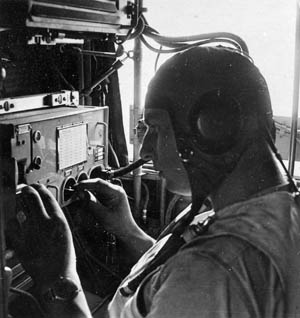
The word führungschaos (leadership chaos) in Jodl’s diary gives an apt description of the tension and excitement at the highest echelons. Jodl wrote in his diary, “We are again confronted with complete chaos in the command system. Hitler insists on issuing orders on every detail; any coordinated effort within the existing military command structure is impossible.”
Arguments erupted between Hitler and Keitel, Jodl, and Grand Admiral Erich Raeder, the commander of the German Navy. The disagreements between Hitler and Keitel became so heated on April 19 that Keitel walked out of the meeting. Hitler wanted Raeder to use two large ocean liners to bring a division to Trondheim. Raeder told Hitler that the whole German Navy would be required to escort the two liners and that the result would likely be the loss of the Navy, the liners, and the division. Hitler relented but insisted on the use of all means to quickly open a land route between Oslo and Trondheim.
The Germans established an air bridge between Oslo and Trondheim starting on April 14. In addition to much-needed supplies, the airlift brought one engineer and five infantry battalions to Trondheim by April 20.
To further speed the link up between their separated forces, the Germans launched an airborne operation in the Norwegian rear at Dombås. This was an important road and railroad junction, where the railroad and roads from Oslo to Trondheim intersect with those leading west to Åndalsnes. While the primary goal of the operation about 225 kilometers behind Norwegian lines at the southern end of Lake Mjøsa was to prevent Allied forces from reaching the southern front, it would also serve as a blocking position for any Allied attempt against Trondheim.
The airborne operation was launched on April 14. It was executed in all haste, without adequate intelligence—aerial reconnaissance could not be carried out because of bad weather—no time for planning, and inadequate forces. When it appeared that the airborne operation against Dombås might be cancelled because of bad weather, General Karl Kitzinger, commander of Air Region Norway as of April 15, sent his chief of staff, Maj. Gen. Wilhelm Süssmann, to the airport to ensure the operation—ordered by Hitler through the OKW—was carried out.
Fifteen German aircraft carried the reinforced Company 1, 1st Parachute Regiment (185 men). The company commander, 1st Lieutenant Herbert Schmidt, had the only map for the Dombås area. He used it to brief his five platoon leaders before the operation.
Landing in Dombås
Dombås is located in the mountains at an elevation of about 2,100 feet, but the surrounding mountains are much higher. The German paratroopers had no winter or camouflage clothing. The soldiers had provisions for only three days, and ammunition was limited to what could be carried. Each aircraft carried four weapon canisters that were dropped separately. These contained a large number of automatic weapons, including 22 MG-34 machine guns. Some of these canisters could not be located in the darkness after the drop.
The element of surprise was lost when the German aircraft stayed below the clouds and followed the railway on their flight to Dombås. They soon received antiaircraft fire from Norwegian forces, and one aircraft, carrying part of the communications platoon, was damaged by antiaircraft fire and forced to make an emergency landing near Lillehammer. All survived the crash, but the Germans opened fire on approaching Norwegian troops. One German was killed and three wounded in the exchange that followed. Thirteen Germans were captured.
The German aircraft had difficulties finding suitable drop zones in the Dombås area since there were only a few breaks in the cloud cover and they were receiving heavy fire from Norwegian forces. Furthermore, the aircraft had to return quickly to Oslo because of low fuel levels and approaching darkness. According to Norwegian sources, the drops took place shortly after 6 pm, while some German sources say they took place from 7:45 until after 10 pm.
The paratroopers were dropped in different locations over a 30-kilometer area around Dombås, from Lora about 25 kilometers west of Dombås to Folkstua eight kilometers to its northeast. Not a single platoon was able to assemble all its personnel.
Lieutenant Schmidt and the 12 paratroopers in his aircraft jumped into an area six kilometers south of Dombås, along the rail line and road, and some of the weapons canisters could not be located after the drop.
The aircraft carrying the 1st Platoon under Lieutenant Becker dropped its paratroopers in the Folkstua area eight kilometers northeast of Dombås. One trooper was killed as he became entangled in power lines, and six were badly injured as the high winds dragged them along the ground. Some of the weapons containers could not be found. The wounded were left at a local farm.
First Lieutenant Ernst Mössinger’s 2nd Platoon was dropped near the Lie farm about three kilometers south of Dombås. One paratrooper was killed on landing. One Ju-52 from Mössinger’s platoon was shot down, with four killed and three wounded. Some paratroopers managed to jump southeast of Dombås before the aircraft crashed. Most of those who jumped before the crash were wounded in action with Norwegian forces and surrendered on April 15. Lieutenant Mössinger was able to assemble about two-thirds of his platoon and link up with Lieutenant Schmidt.
The 3rd Platoon, under Sergeant Bobrowski, landed on Hill 1173 on the eastern outskirts of Dombås. Seven paratroopers mistakenly exited the aircraft too early, over the town of Dombås. Two were killed in fighting with Norwegian forces and the rest were captured. Bobrowski’s platoon encountered Norwegian forces four kilometers south of Dombås, and two paratroopers were killed. The remainder of the platoon linked up with Lieutenant Schmidt on April 15.
The 4th Platoon, under Feldwebel Alexander Uhlig, overshot the target area and landed about two kilometers southeast of Lora along the Dombås-Åndalsnes rail line. Uhlig started moving his men in the direction of Dombås.
The communications platoon of 24 men landed near Hill 1578 about 12 kilometers southwest of Dombås. One paratrooper exited the aircraft too early. He reached Dombås, covered his uniform with civilian clothes, and managed to avoid capture until April 29. The rest of the platoon dug into the snow for the night.
“Stupidity”
The return of the German aircraft developed into a catastrophe. Only five of the 15 aircraft made it back to Oslo. Two landed at Værnes Airfield near Trondheim. The rest were shot down or forced to make emergency landings as they ran out of fuel. One aircraft made an emergency landing in Sweden.
The Germans had the misfortune of landing near the location of the Norwegian 2nd Battalion, 11th Infantry Regiment. The Norwegians had moved this unit to Dombås on April 13 to take part in the planned Allied operation against Trondheim. The isolated groups of German paratroopers, with no maps and in over six feet of snow, soon found themselves under attack by superior forces.
Lieutenant Schmidt tried to reach Dombås on April 14 in a commandeered vehicle but ran into two truckloads of Norwegians from the 11th Infantry. The Germans attacked, forcing the Norwegian troops to retreat. However, Lieutenant Schmidt and one paratrooper were seriously wounded and another was captured. The move against Dombås was abandoned. The wounded paratroopers eventually died.
The Germans entrenched themselves on two farms, Ulekleiv and Hagevoll, in excellent positions that dominated the surrounding landscape. Lieutenant Schmidt’s group grew to 63 when the men from Bobrowski’s 3rd Platoon joined them on April 15. Although suffering from a severe stomach wound, Schmidt did not relinquish command.
The German airdrop near Dombås worried the Norwegian authorities since members of the government and the royal family were located nearby and the gold reserve of the Norwegian Central Bank was being evacuated by train from Lillehammer to Åndalsnes. Intelligence was scarce, and the Norwegians had only the vaguest idea of the size and location of the German force.
General Otto Ruge, commander of the Norwegian Army, was critical of the disorganized and piecemeal actions by his troops. He wrote that the first force sent against the Germans allowed itself to be ambushed and that a second attempt by larger forces on April 15 repeated the “stupidity.”
Buying Time
Two platoons of Norwegian troops, commanded by Captain Eilif Austlid, were involved in security operations for members of the government. This force was ambushed by Schmidt’s men, and two Norwegians were killed. Captain Austlid personally led a counterattack that reached to within a few meters of the German positions. He and four of his soldiers were killed, and the counterattack failed. Twenty-eight Norwegians were captured. During the day the German paratroopers cut the rail and telephone lines.
The Norwegians renewed their attacks on April 16 with one company of the 5th Infantry Regiment from the south while a company from the 11th Infantry Regiment, supported by mortars, attacked from the north. There was a break in the fighting when the Germans sent a prisoner they had captured the previous day to the Norwegian lines under a flag of truce. Lieutenant Schmidt, through the returned soldier, informed the Norwegians that their fire endangered the lives of Norwegian prisoners that the Germans had in their positions, and he demanded that the Norwegians surrender.
The response by the Norwegian commander was to send a German sergeant they had captured to Schmidt’s position with a demand that the Germans surrender.
Lieutenant Schmidt had an ulterior motive for entering into these pointless negotiations. He had concluded that the position he occupied had become untenable, and he tried to gain time to move his men to new positions during the night. The German disengagement benefited from a sudden blizzard that, along with the darkness, concealed their movements. The Germans attacked and drove back the force opposing them in the north, then disengaged and withdrew south toward Dovre. The withdrawing Germans encountered a platoon-sized Norwegian security force at a bridge but drove it back in a sharp night attack.
Other Norwegian forces meanwhile continued to mop up German paratroopers who had not managed to join Schmidt. Lieutenant Becker’s platoon approached Dombås from the northeast and ran into units of the 11th Infantry Regiment. One paratrooper died in the ensuing fight, and the rest surrendered.
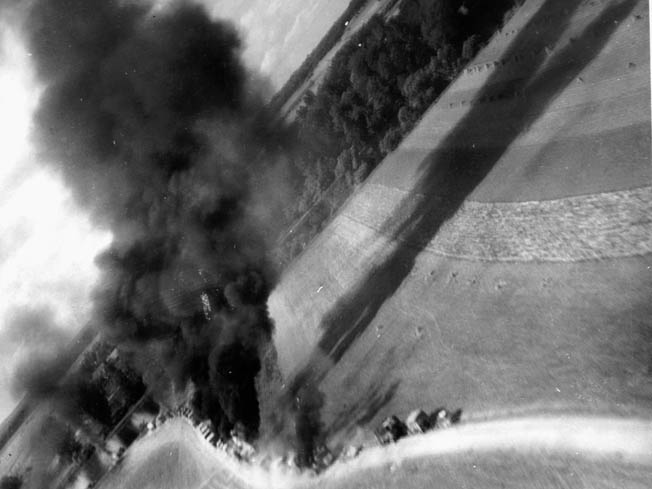
Sergeant Uhlig’s 4th Platoon tried to reach Dombås from the west. One paratrooper was killed in an engagement with Norwegian troops. Uhlig decided that he had no option but to surrender his 22 men near Kolstad on April 16. One day earlier, Lieutenant Gerhold’s communications platoon had descended the northern slope of the mountains on which they had landed, intending to reach the Dombås-Åndalsnes road and approach Dombås from the west. They were soon surrounded by Norwegian troops, and 23 were captured near the Bottheim railroad station about nine kilometers from Dombås.
Surrounded Without Support
The main German force sought new positions at daybreak on April 17, settling on the small Lindse farm about 800 meters from the main road and less than 300 meters from the railroad. The stone barn on the farm became the main German position. The Norwegians believed that most of the Germans were still at Ulekleiv, and they continued to send reinforcements to that area. The 1st Battalion, 11th Infantry Regiment was replaced by the 2nd Battalion of the same regiment. A 40mm antiaircraft gun was also brought in.
The Norwegians realized at the end of the day that the whole German force had withdrawn to new positions. The fact that Norwegian forces were ambushed on the morning of April 17 by the Germans at Lindse provided the final proof that the Germans had escaped the encirclement at Ulekleiv. Major Kjøs and part of the vanguard of the Norwegians caught in the ambush were captured, and other Norwegian forces withdrew to Dover.
By morning of April 18, the Germans were again surrounded in their new positions with the 1st Battalion, 11th Infantry Regiment to the north and the reinforced Company 1 of the 5th Infantry Regiment to the south. The Norwegians also used the antiaircraft gun against the German positions. They began their attack early on April 18, and the situation soon became desperate for the Germans.
The only relief received by the paratroopers arrived on April 18, when a Ju-52 dropped badly needed supplies. The supply containers were dropped without parachutes, and 90 percent became unusable.
Reichsmarshal Hermann Göring, commander of the Luftwaffe, refused to send reinforcements despite urgent requests. Still hoping for an early link-up with the forces in Trondheim, General Nickolas von Falkenhorst, German commander in Norway, planned a second airborne operation on April 16 to bypass the Norwegian defenses in the Lake Mjøsa area. The operation was cancelled after the Luftwaffe declined to participate because of “technical difficulties.”
The German paratroopers at Lindse were completely surrounded by the morning of April 19. The Norwegians had also obtained reinforcements in the form of a howitzer mounted on a flatbed rail car and operated by a crew of British Royal Marines. The German ammunition supply was running low, and Schmidt sent his second in command, Lieutenant Ernst Mössinger (he also commanded the 2nd Platoon) to negotiate an acceptable surrender. The Norwegian commander, Major Arne Sunde, demanded an unconditional surrender, and the Germans complied at 11:30 am on April 19.
Consequences of the Operation
Forty-five Germans became Norwegian prisoners, among them six severely wounded. The wounded were sent to a Norwegian hospital in Ålesund, while those who were not wounded, including others mopped up by Norwegian forces, were sent to a prisoner-of-war camp near the city of Kristiansund. The prisoners were freed by German forces on May 6, and many later participated in operations at Narvik under the command of Lieutenant Mössinger.
The exact number of German casualties in the operation is not known but it is believed to include 23 killed (including pilots), 25 badly wounded, and 14 missing. Norwegian losses are placed at 20 killed and about 20 wounded.
The German airborne operation at Dombås, although a failure, had important psychological consequences. Norwegian and Allied commanders tied up badly needed forces in anticipation of similar threats in other areas. The operation also had repercussions at the highest level of the German armed forces. Court-martial charges were brought against General Süssmann for having allowed the badly prepared operation to proceed in weather conditions unsuitable for airborne operations. The charges were dropped in June 1940, probably due to Göring’s intervention.
Securing Narvik
Narvik is located 210 kilometers north of the Arctic Circle, and the distance to Oslo is approximately 1,450 kilometers. Narvik is an excellent ice-free port, and Swedish iron ore was shipped through this town when the Baltic Sea was frozen.
The Germans did not plan to use airborne forces at Narvik. The city was well beyond the range of all but specialized German aircraft until they could secure suitable airfields in central Norway. Furthermore, the Germans believed they would meet only token resistance. When this assumption failed to materialize, Maj. Gen. Eduard Dietl and his 2,000 troops from the 3rd Mountain Division found themselves isolated about 600 kilometers from the nearest friendly forces in Trondheim.
The Germans captured Narvik and the nearby military depot on April 9, but were unable to secure Bardufoss Airfield because of stiffening resistance from rapidly mobilizing Norwegian units that went on the offensive within two weeks of the landing. The British were also bringing forces into the region.
The Germans made a concerted effort to supply the Narvik forces starting within a few days of the landing. These were primarily by long-range aircraft, seaplanes, and aircraft with modified fuel capacity. Eleven Ju-52s landed on a frozen Hartvig Lake on the evening of April 13 with a battery of mountain artillery from Berlin. Three aircraft were damaged while landing, and one was destroyed by Norwegian aircraft. The remaining Ju-52s froze into the ice, and all, except one, were unable to take off and were eventually captured by the Norwegians. After this ill-fated experience on the lake, the Germans turned to airdrops and the use of seaplanes.
Germany received permission from Sweden to send supplies and personnel to General Dietl through Sweden on April 17 and 18, provided they were of “a humanitarian nature.” It is estimated that the provisions received by this route in April were sufficient to sustain 4,000 troops for three months. Some military personnel apparently disguised as Red Cross workers were also brought in. The Germans were not permitted to transport weapons, ammunitions, or reinforcements through Sweden.
Despite organizing the 2,100 sailors from the crews of destroyers sunk by the British in recent naval actions into infantry units, reinforcements became the most critical problem after Norwegian forces drove the Germans from the high mountain plateau on May 22. The front was near collapse, pressure was mounting, the line of retreat was threatened, and the trickle of reinforcements was not sufficient to replace losses or turn the tide of battle.
Reinforcing the Narvik Pocket
With his forces near collapse, Dietl needed additional troops to shore up the front and give some of his mountain troops a chance to rest. General Falkenhorst had no further airborne forces and asked OKW on May 15 for one parachute battalion. He argued persuasively that the valiant efforts by the troops in Lieutenant General Valentin Feurstein’s 2nd Mountain Division, driving north from Trondheim, would be in vain if Narvik could not be held until they arrived.
Falkenhorst’s request produced results. Hitler ordered the rest of the 1st Battalion, 1st Parachute Regiment, under Captain Walther, to Narvik. This force had participated in the operations in Holland on May 10. It was anticipated that this unit should start arriving in Narvik within a week or 10 days.
In the meantime, Falkenhorst’s command had carried out expedited and abbreviated parachute training for some of the mountain troops. The first group of these—65 men from Company 2, 137th Mountain Infantry Regiment—parachuted into the Bjørnefjell area adjacent to the Swedish border where Dietl’s headquarters was located on May 23. The Germans expected 10 percent casualties in the operation, but only two soldiers sustained minor injuries. Another drop of mountain troops was made the following day—this time involving 55 troops from Company 1 of the 137th. Fifty-four troops from Company 1, 137th arrived by parachute on May 25, as did 44 troops from Company 2, 138th Regiment. These were rushed to Narvik before May 28 when an Allied and Norwegian amphibious assault captured that city.
The remainder of the 1st Battalion, 1st Parachute Regiment began arriving on May 26, when 81 men parachuted into the Bjørnefjell area. Inclement weather delayed the next lift until May 28 when 46 paratroopers were dropped. Another 134 arrived on May 29, and the remaining 46 were deployed on June 2. Although 599 troops arrived in the Narvik area between May 23 and June 2, Dietl concluded that he needed another 1,500 to 2,000 men to replace losses and hold out.
The airdrop of weapons and ammunition for the Germans at Narvik was not without mishap. The airdrop of 15 captured Polish antitank guns was unsuccessful as all weapons became unserviceable. About 30 percent of the infantry weapons that were airdropped were badly damaged and unusable. A slightly lower percentage of the ammunition parachuted into the Narvik pocket was damaged to the point where it was useless.
The OKW was searching frantically at the end of May and early June for ways to bring Dietl the reinforcements he needed to hold out until General Feurstein arrived from the south. Dietl was promised—as soon as the weather permitted—two parachute battalions, about 1,800 men and practically the whole German airborne force, and another 1,000 mountain troops who were to be given a quick parachute course.
Norwegian Armistice
In early June, OKW planned a new operation to bring relief to the Narvik pocket. This involved landing a strong force about 90 miles north of Narvik at the same time as paratroopers captured Bardufoss Airfield. The plan included the transport of about 6,000 troops and a dozen tanks to Lyngefjord aboard the fast ocean liners Bremen and Europa.
Raeder pointed out to Hitler that the operation could not be launched before June 20, too late to help Dietl, and he suggested that it would be quicker and easier for the Luftwaffe to seize Bardufoss with a parachute and glider force and then bring in troops by transports. Hitler decided that both operations, Lyngefjord and Bardufoss, were to be carried out simultaneously.
The final Norwegian offensive against Dietl was under way at the end of May, but support from Allied forces was not forthcoming because of their decision to evacuate Norway on May 24. The evacuation from Dunkirk was under way, and it was decided that all available forces were needed to defend Great Britain. The news was kept from the Norwegians for security reasons.
Any chance of forcing a German surrender or driving Dietl’s forces into internment in Sweden came to an end on June 1, when the Norwegians were informed about the British evacuation. Requests from the Norwegians for a postponement of the evacuation or air support and supplies for Norwegian forces to continue their offensive were denied. In the end, the Norwegian government opted for exile. An armistice with the Germans was concluded on June 10.
Aftermath of the Norwegian Operations
Colonel Bruno Oswald Bräuer was promoted to major general in 1942, and he commanded the 9th Airborne Division in 1945. He relinquished his command for medical reasons in April of that year. Bräuer was captured by the British and extradited to Greece where he was tried for crimes dealing with the deportation of Jews. He was executed by firing squad in Athens on May 20, 1947.
Captain Erich Walther participated in the airborne operations in Holland between the initial invasion of Denmark and Norway and his later involvement at Narvik. Walther rose rapidly in rank and ended the war as a major general. He was captured by the Soviets in May 1945 and died in a POW camp in 1947.
Captain Kurt Gröschke rose to the rank of colonel and was the commander of the 15th Parachute Regiment in 1945. He was captured by the British and released in 1946.
First Lieutenant von Brandis and his company participated in the airborne operation against the Dordrecht bridges in Holland on May 10, 1940. The company was decimated in heavy fighting, and Lieutenant von Brandis was killed.
Dombås holds the unfortunate distinction of being the place where the first U.S. military casualty of World War II, Captain Robert M. Losey of the Army Air Corps who served on the defense attaché’s staff in Helsinki, Finlnd, lost his life. Losey had been ordered to Norway to assist in the evacuation of the embassy staff and other U.S. citizens. He was killed by a bomb fragment on April 21, 1940. Hermann Göring sent a letter of regrets and condolences to the commander of the U.S. Army Air Corps, Major General Henry H. Arnold, a few days after the incident. The citizens of Dombås erected a memorial to Captain Losey in 1987.
First Lieutenant Herbert Schmidt recovered from his wounds and wrote a book about the Dombås operation in 1941, Die Fallschirmjäger von Dombas. Schmidt was killed by the French Resistance in 1944.
Major General Wilhelm Süssmann commanded the 7th Air Division during the invasion of Crete in 1941. He was killed when the glider in which he was riding crashed.
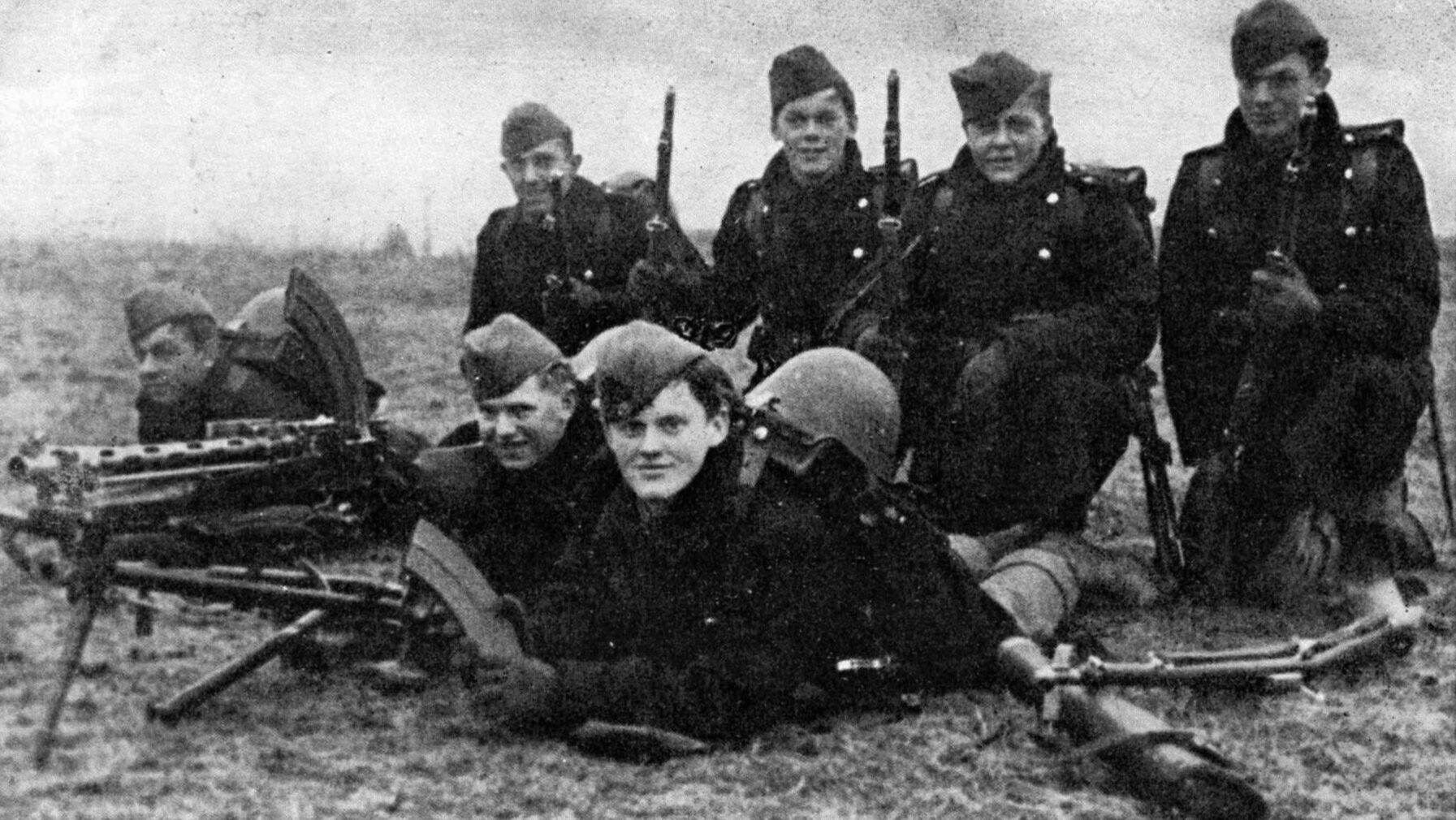
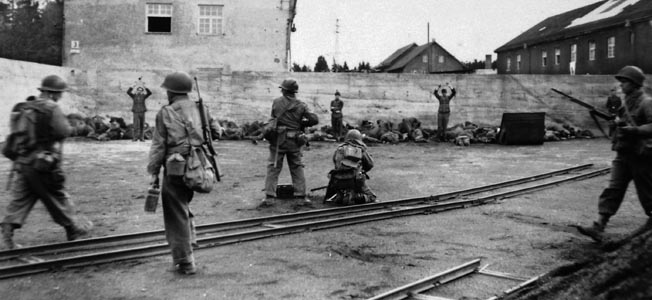
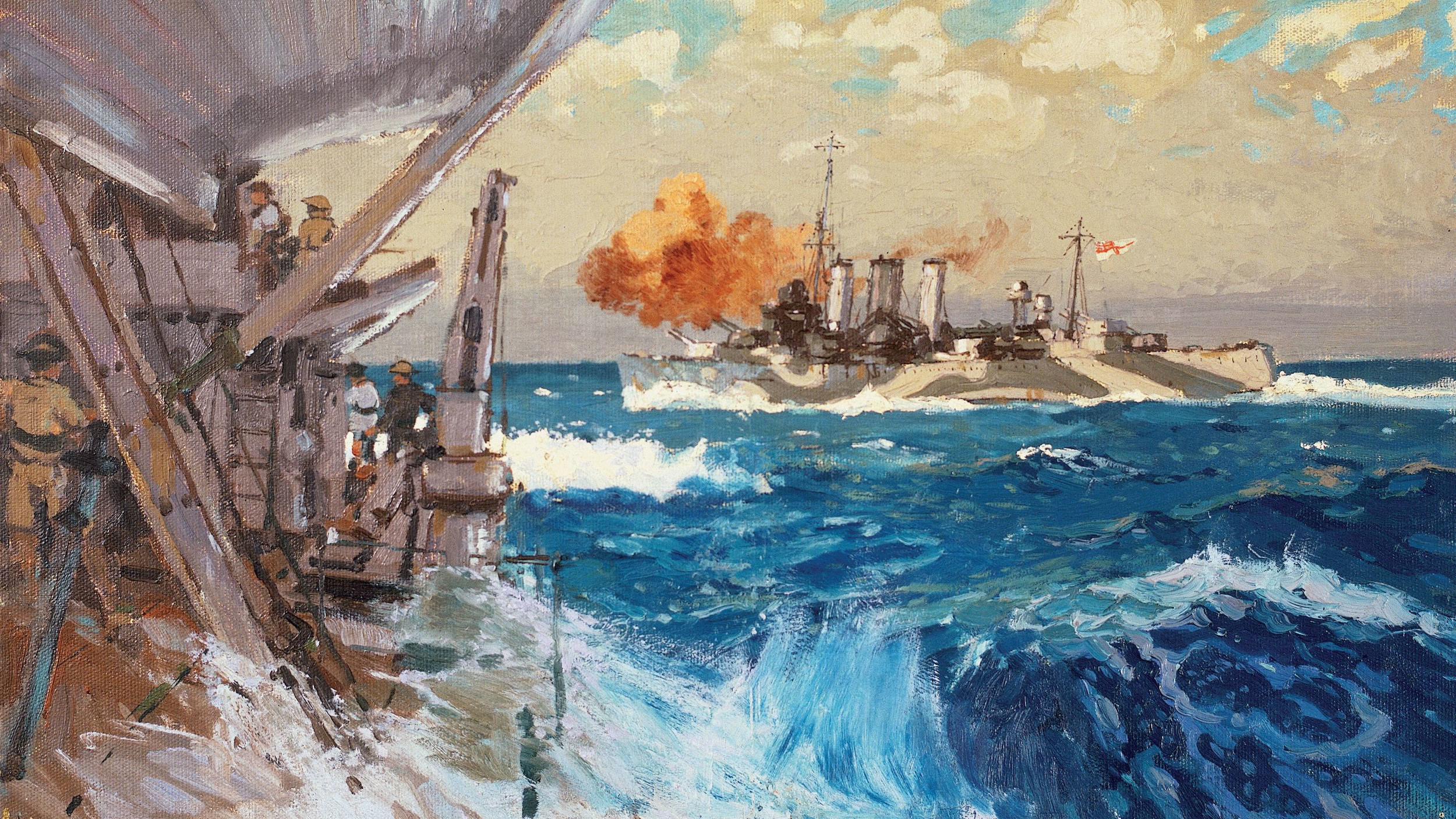
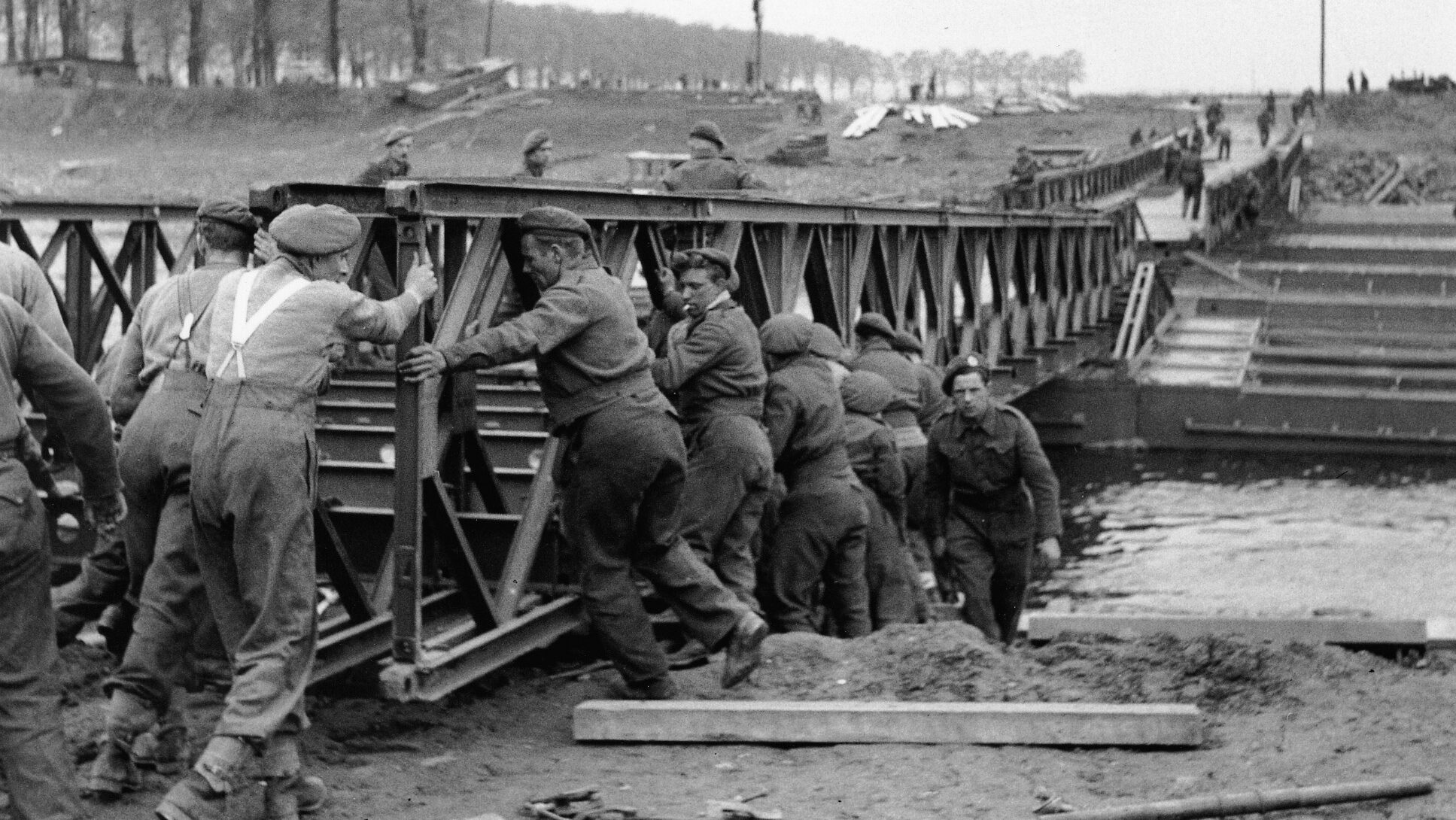
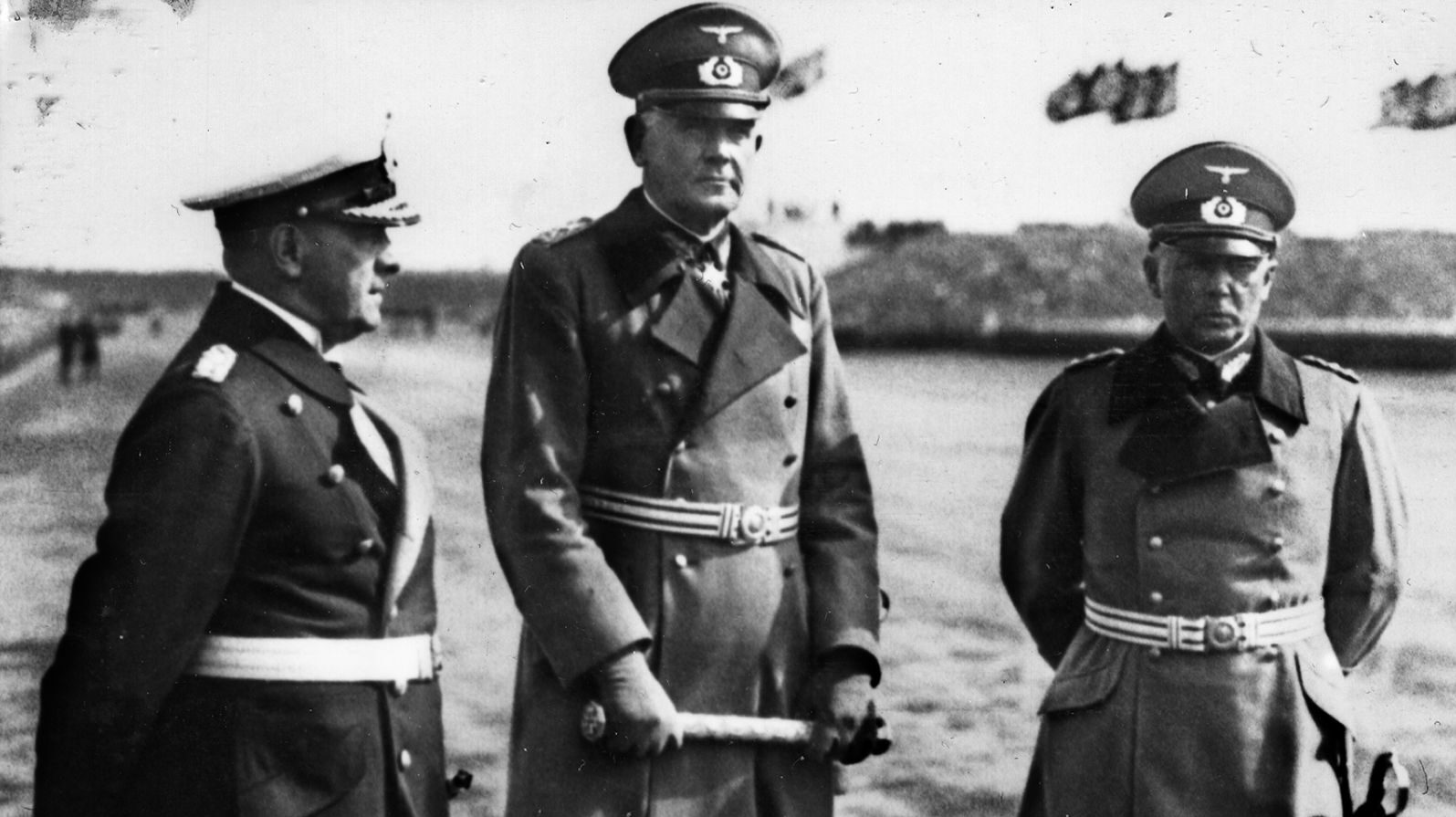
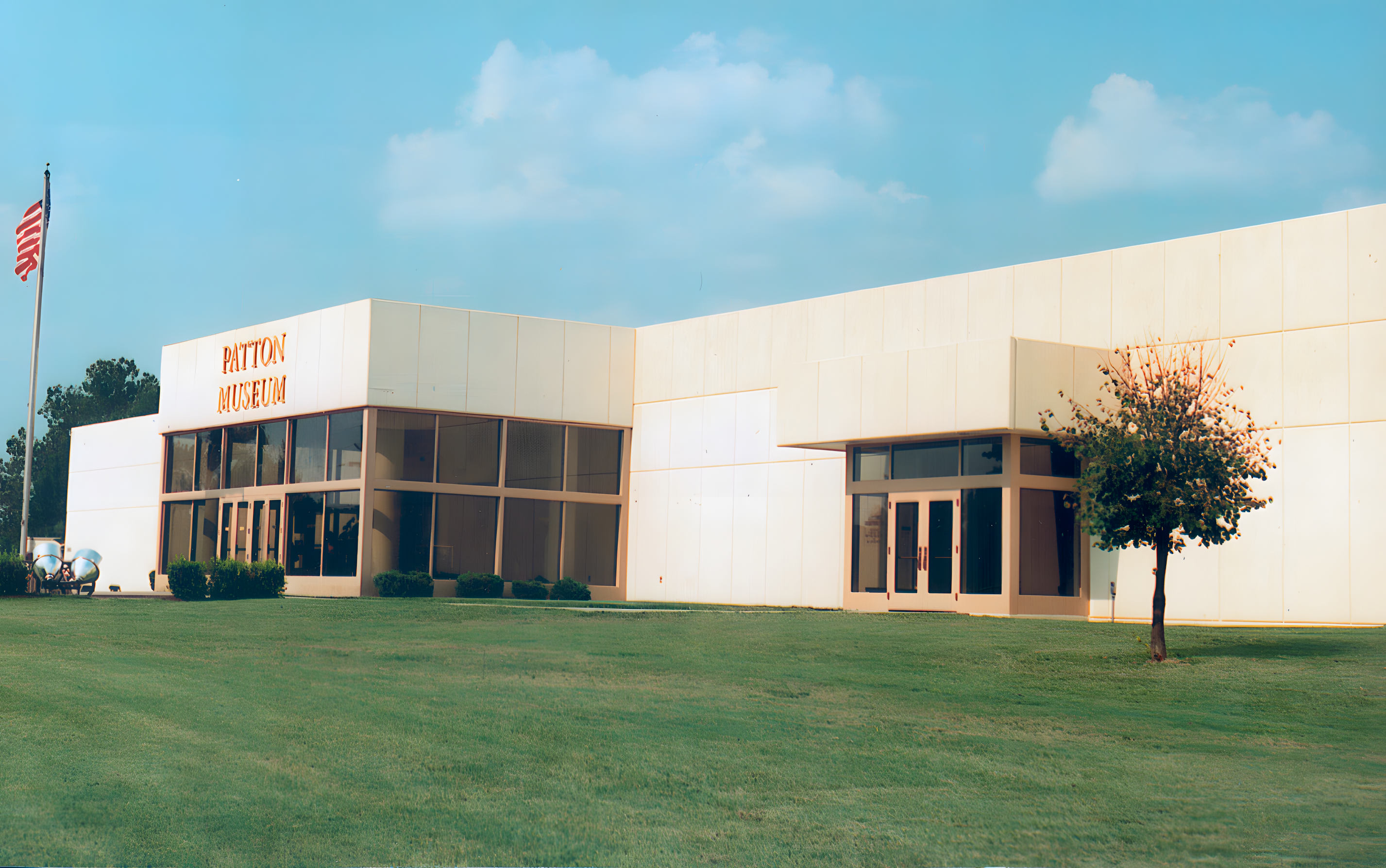
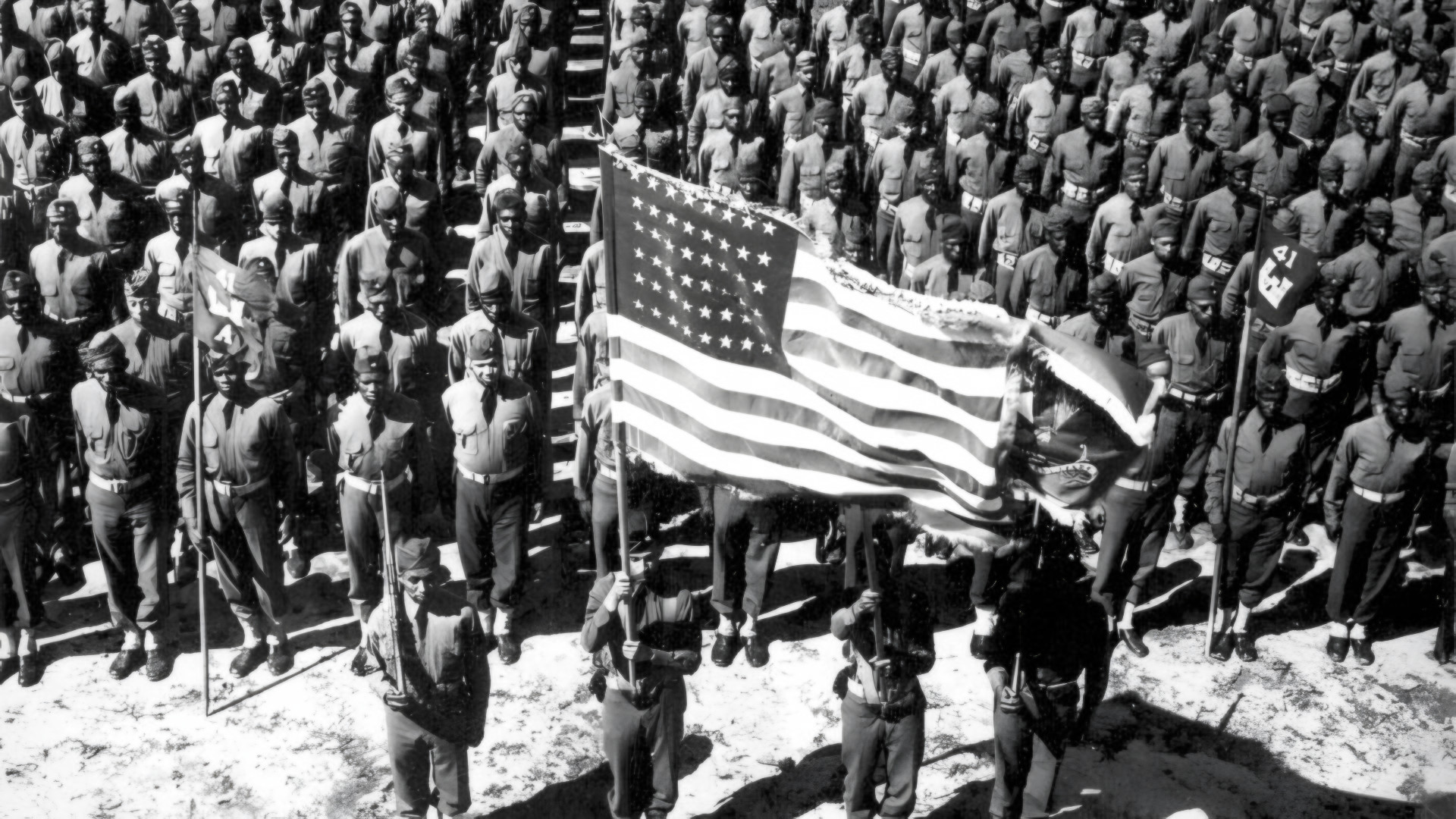
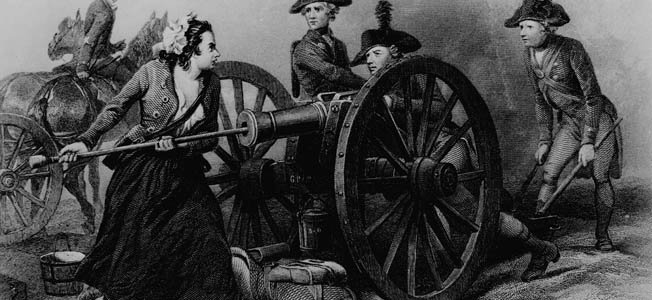
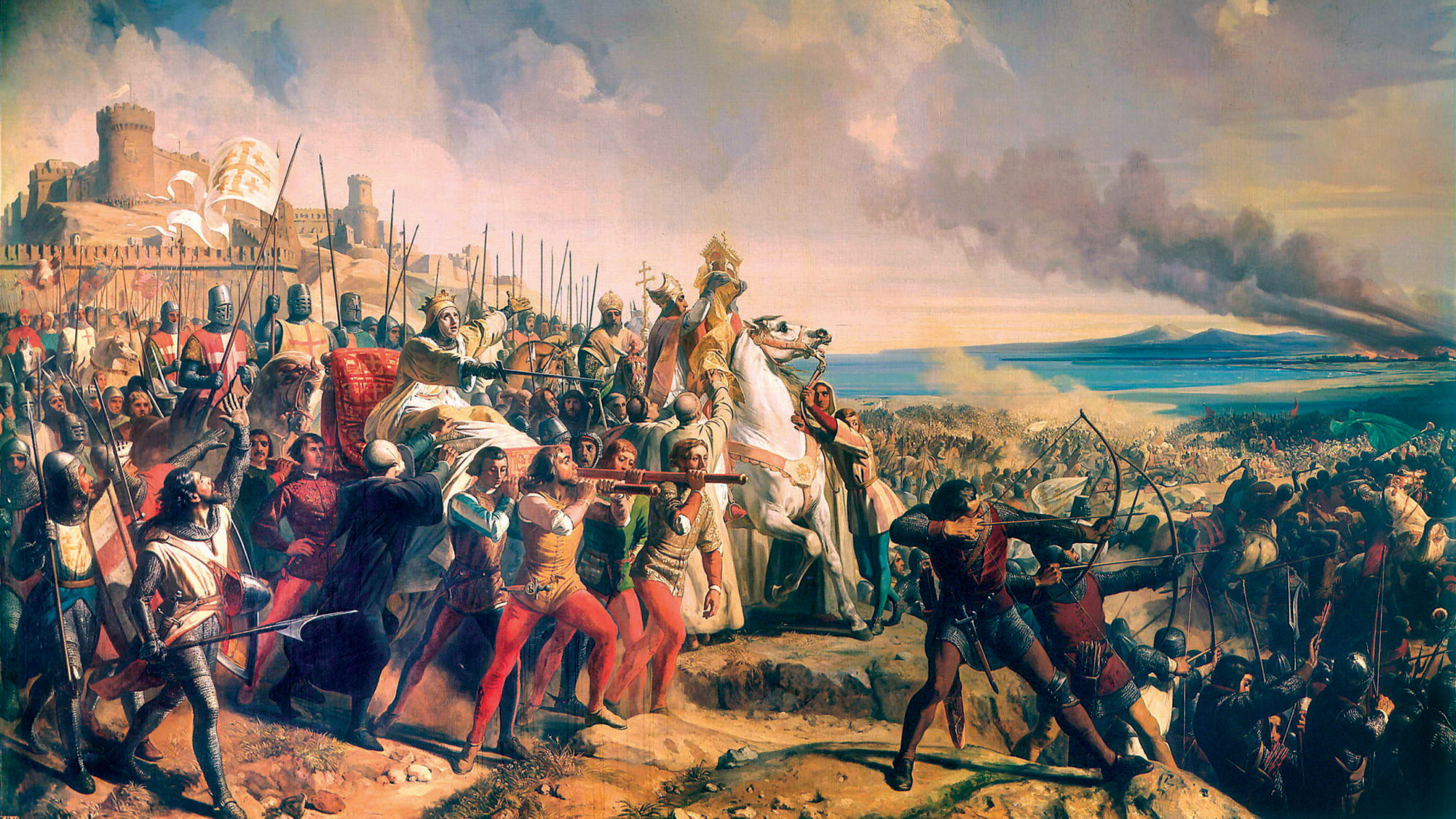
Join The Conversation
Comments
View All Comments